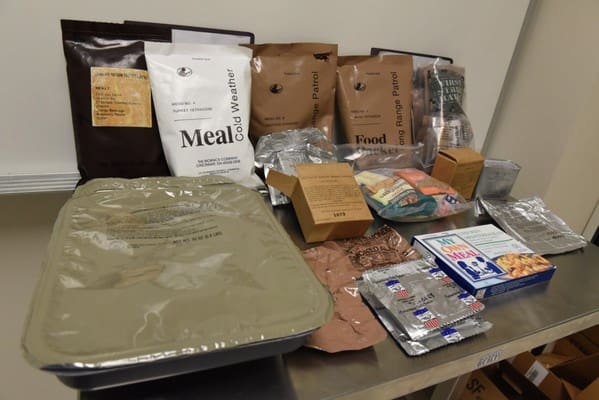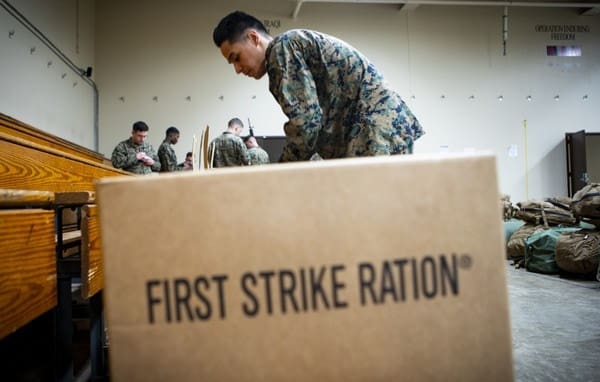PHILADELPHIA, March 3, 2020 —
For 40 years, warfighters have feasted on the “famous” Meal, Ready-to-Eat. But thanks to a partnership between the Defense Logistics Agency Troop Support Subsistence supply chain and the Department of Defense Combat Feeding Directorate, that is not the only individual combat ration available.
Today, there are several different types of individual rations with varying menu options to fuel the body for warfighters serving in traditional field locations, on the front line of an initial encounter and in locations with extreme temperatures.
As operational environments and warfighters’ physical demands change, so do the requirements that begin a ration’s life cycle.
“The service will determine that they need a specific ration to fulfill a specific need,” Harry Streibich, Subsistence Operational Rations division chief, said. “Then Natick [Department of Defense Combat Feeding Directorate] conducts research to test and develop a meal that meets the services operational and nutritional requirements.”
According to a representative from the Combat Feeding Directorate, the life cycle of an individual ration, can span a decade from concept to the field.
The MRE

“In general, most changes require from 24-36 months when you consider product development, nutritional analysis, accelerated storage and sensory evaluation, field testing with soldiers, Joint Service Operational Ration Forum (JSORF) review, technical data and procurement documents finalized and transitioned to Defense Logistics Agency Troop Support,” a Combat Feeding Directorate representative said.
Once the service approves the new ration, the Subsistence supply chain procures it.
“Individual rations are provided by three to four primary vendors who make the entrees and assemble the rations in-house,” Streibich said. “Through a network of subcontractors, the vendors provide the individual components of each ration.”
The MRE is the longest standing individual ration, and the most purchased ration from DLA.
“At the beginning of the year we buy at least 2.5 million cases of MREs,” Streibich said. “Based on usage we buy additional cases half way through [the year]. This year alone we are expecting to buy an additional 650,000 cases.”
Streibich said that for fiscal 2019, Subsistence bought $434 million of individual rations. Of that, the MRE represented $421 million, which represents 96 percent of all individual ration sales.
Dynamic needs, specialized options

For warfighters finding themselves in the initial stages of conflict, they have the option of the First Strike Ration – a compact, eat-on-the-move meal.
The FSR was created about 10 years ago, and Subsistence purchases approximately 60,000 cases each year, according to Streibich.
“It is a stripped down version of MRE that meets the immediate needs of the warfighter for the first 72 hours of battle,” Streibich said.
Another individual ration that units can request is the Modular Operational Ration Enhancement for warfighters operating in environments of extreme heat or cold, Streibich said. The MORE provides extra calories to account for strenuous activity in high altitude, cold weather or hot weather environments.
“This meal supplements the MRE, and provides higher calorie foods such as dehydrated items that will not freeze in colder climates such as in Alaska or Norway, “Streibich said.
Subsistence also provides rations for Warfighters with religious dietary restrictions.
The Troop Support rations team procures about 40,000 cases of Halal and 8,000 cases of Kosher meals to meet the yearly demand, Streibich said.
Global, dynamic readiness

Regardless of the warfighters’ mission, each individual ration is designed as a packaged, shelf-stable item intended to provide complete and balanced nutrition, the Combat Feeding Directorate representative said.
“These rations are typically used to sustain individuals during operations that prevent the use of organized food service facilities,” the Combat Feeding Directorate representative said. “They may be consumed continuously and exclusively for several days, or longer, based on mission requirements and logistics infrastructure within an area of operations.”
For more information about Operational Rations, visit DLA Troop Support’s Operational Rations web page.
By Alexandria Brimage-Gray


While MREs are nothing to be called home about, when you think of the science, effort and money put into feeding our service members… there could be worse options.